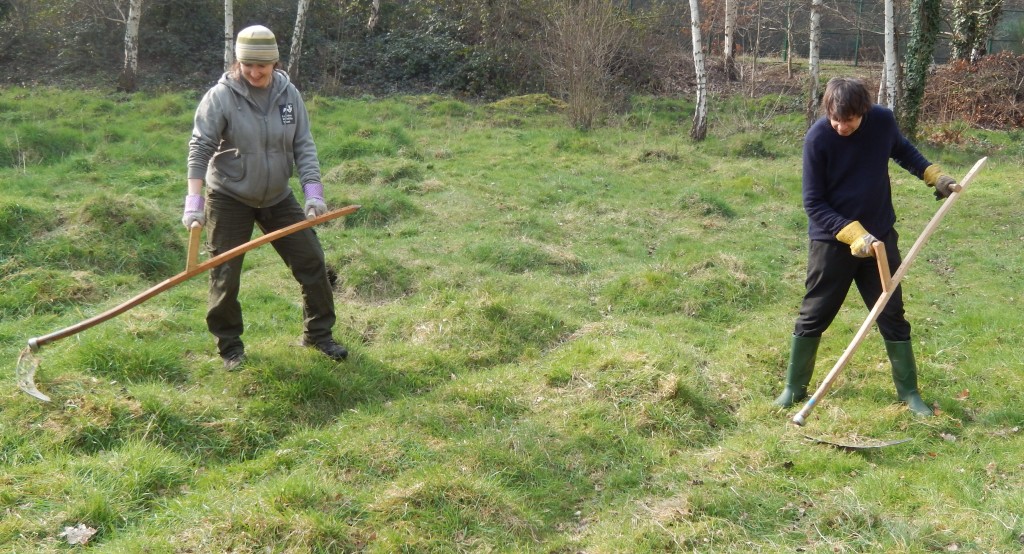
Spring, as in so many years, seems to be coming and going. Today, despite a gloomy forecast, the sun came out, coats came off, the Chiffchaffs started to sing, and we went happily to work in the sunshine. We fixed a new rail to mark off a Forest School area as “not a path”, despite appearances: we rigged it up with a hinge one end and a keeper – posh name for a pair of bits of batten screwed on to the post – to hold the rail the other end when it’s in the down position. We cleared up a vandalized loggery, using the stray bits of log and lots of cut ivy to block off an undesired path, and filled in the hole.
And then we all had a lesson in scything – you have to put the thing together to fit your height and arm length. The main pole is ingeniously not quite straight; the two handles each fit on with a bolt; the blade fits on with a lug and two grub screws in a metal housing. It sounds a bit fiddly and it takes a little time to adjust it, but when you have it exactly right, it’s a pleasure to use, and astonishingly light to swing. The blade needs to be sharpened every few minutes to keep it slicing effortlessly through grass, which contains silica (aka sand) and quickly blunts blades. But, well-maintained, the scythe is a remarkably efficient tool, and environmentally friendly. Contrary to expectations, it does not cause strain or backache, and people large and small can use it effectively. It’s trickier on bumpy ground covered in anthills. Five of us mowed the picnic meadow and the anthill meadow in an afternoon: it was no quicker (and a lot noisier) with the brushcutter. We disturbed a small frog or two, and accidentally scraped a small toad that was hiding in the long grass, but it wasn’t seriously hurt.
On the common I heard a Mistle Thrush calling, and a flock of Goldfinches. A party of Long-Tailed Tits visited the garden. Red and White Deadnettles are in bloom; Cow Parsley is coming into fresh leaf.
